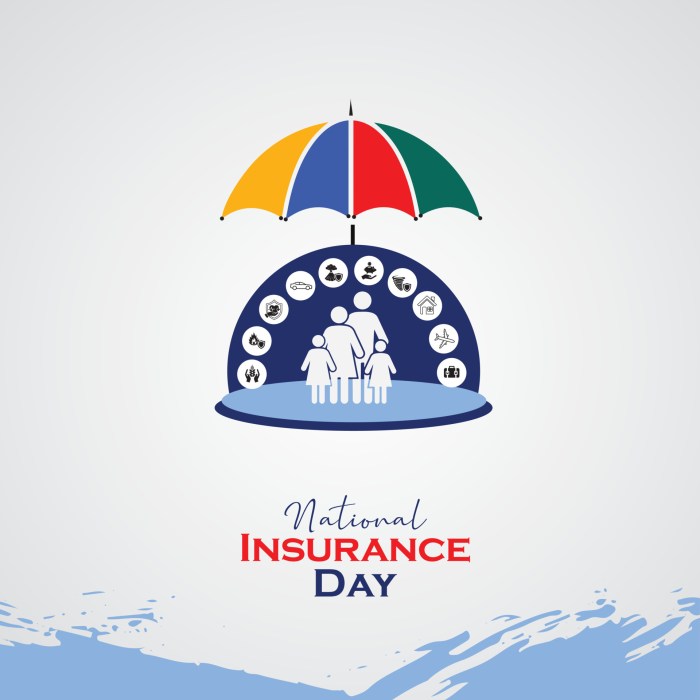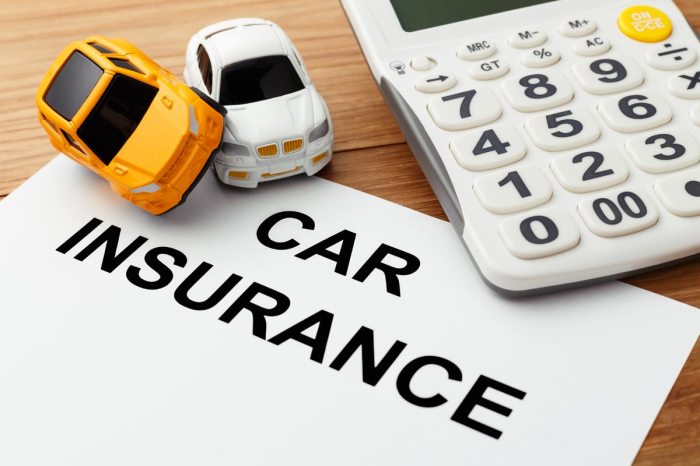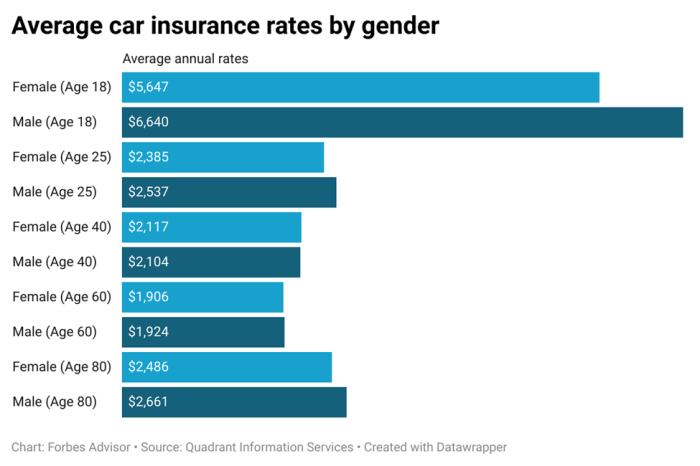Need car insurance for just a day or two? Traditional policies often fall short for short-term needs. Enter auto insurance by the day, a flexible and increasingly popular option for travelers, temporary vehicle users, and anyone requiring brief, targeted coverage. This guide explores the nuances of daily car insurance, comparing it to traditional options, examining providers, and delving into the legal aspects to ensure you’re fully informed.
From understanding the pricing factors and coverage details to navigating the connection with rental car insurance, we’ll demystify this convenient and cost-effective solution. We’ll also explore future trends and innovative approaches within this evolving insurance landscape.
Defining “Auto Insurance by the Day”
Auto insurance by the day, also known as pay-per-day car insurance or short-term car insurance, provides temporary coverage for a vehicle for a specified period, typically ranging from a single day to a month. Unlike traditional policies that offer annual coverage, this option offers flexibility and cost-effectiveness for individuals who don’t need continuous insurance.
This type of insurance caters to a specific customer profile. It’s ideal for individuals who need car insurance for infrequent driving needs, such as occasional trips, rentals, or short-term vehicle use. This could include tourists visiting a new city, individuals borrowing a car for a specific event, or those whose primary vehicle is temporarily out of commission.
Comparison with Traditional Auto Insurance Policies
Traditional auto insurance policies offer continuous coverage for a full year, typically requiring a larger upfront premium. Daily car insurance, on the other hand, is paid for only the days the coverage is needed, resulting in lower overall costs for those with limited driving requirements. Traditional policies provide comprehensive coverage, including liability, collision, and comprehensive protection, often with additional features like roadside assistance. Daily insurance typically offers a more limited range of coverage, focusing on the essential liability protection needed for the short-term period. The level of coverage offered varies depending on the provider and the specific policy chosen. For instance, comprehensive and collision coverage might be excluded or offered as optional add-ons.
Situations Benefiting from Daily Car Insurance
Several scenarios highlight the advantages of daily auto insurance. For example, a person renting a car for a weekend getaway would find this type of insurance more cost-effective than purchasing a full annual policy. Similarly, someone whose car is in the shop for repairs and needs temporary transportation might opt for daily coverage until their vehicle is fixed. Tourists renting a car for a short vacation would also benefit, as they only pay for the days they need coverage. Another example would be an individual borrowing a friend or family member’s car for a single errand or short trip. In these instances, daily car insurance provides the necessary protection without the commitment and cost of a long-term policy.
Providers and Availability

Securing daily car insurance hinges on understanding the providers and their geographical reach. Availability varies significantly depending on location and the specific insurer’s operational areas. While some companies offer nationwide coverage, others may only operate within specific states or regions. This section explores major providers and the limitations imposed by geography.
Finding daily car insurance can be more challenging than obtaining traditional policies, as not all insurers offer this type of coverage. The market is still developing, with some companies specializing in short-term rentals or specific niche markets. Understanding the geographical limitations is crucial for those seeking this type of insurance.
Major Providers and Geographical Reach
Several companies offer daily car insurance, but their reach varies considerably. For example, some large national insurers may offer this product as an add-on to their existing policies, while smaller, regional companies might specialize solely in short-term rentals. In certain areas, particularly rural regions, finding a provider offering daily car insurance might be difficult. International availability is even more limited, with few companies providing cross-border coverage for short-term rentals.
Provider Comparison Table
The following table compares four hypothetical providers (actual providers and their offerings can vary significantly based on location and time). Pricing and coverage details are illustrative examples and should not be taken as definitive quotes. Always check directly with the provider for the most up-to-date information.
| Provider | Pricing Model | Liability Coverage | Collision/Comprehensive |
|---|---|---|---|
| InsureDaily (Hypothetical) | Per-day rate, varies by vehicle and location | $25,000 – $100,000 | Optional, additional cost |
| DayTrip Auto (Hypothetical) | Flat rate per day, discounts for multi-day rentals | $50,000 | Included in base price |
| QuickCover (Hypothetical) | Based on vehicle value and rental duration | $25,000 – $50,000 (adjustable) | Optional, varies by vehicle |
| ZipCar Insurance (Hypothetical – integrated with car-sharing service) | Included in rental price, varies by car type | Standard liability coverage | Typically included |
Pricing and Coverage
Daily car insurance pricing and coverage vary significantly depending on several factors. Understanding these factors is crucial for consumers to make informed decisions and secure the appropriate level of protection for their needs. This section will delve into the specifics of pricing, coverage levels, and common exclusions.
Factors Influencing Daily Car Insurance Cost
Several key factors influence the daily cost of car insurance. These factors are often assessed algorithmically by insurance providers to determine risk and price accordingly. A higher risk profile generally translates to a higher daily premium.
- Vehicle Type and Value: Insuring a high-value sports car will be considerably more expensive than insuring a basic sedan. The likelihood of theft, damage, and the associated repair costs are all considered.
- Driver’s Age and Driving History: Younger drivers and those with a history of accidents or traffic violations are considered higher risk and will typically pay more. A clean driving record usually results in lower premiums.
- Location: Insurance rates vary by location due to differences in crime rates, accident frequency, and the cost of repairs. Urban areas often have higher premiums than rural areas.
- Coverage Level: The amount of coverage selected directly impacts the daily cost. Comprehensive coverage, including collision and liability, will be more expensive than a minimal liability-only policy.
- Rental Period: The length of the rental period can influence the daily rate. Some providers may offer discounts for longer rentals.
Coverage Levels Offered by Daily Insurance Providers
Daily car insurance policies typically offer varying levels of coverage, mirroring the options found in standard auto insurance. However, the specifics and limits may differ.
- Liability Coverage: This covers bodily injury or property damage caused to others in an accident for which you are at fault. Limits vary widely between providers and policy types.
- Collision Coverage: This covers damage to your rental car resulting from a collision, regardless of fault. This is usually optional and adds to the daily cost.
- Comprehensive Coverage: This covers damage to your rental car from non-collision events, such as theft, vandalism, or weather damage. Like collision coverage, it’s usually optional and increases the premium.
- Uninsured/Underinsured Motorist Coverage: This protects you if you are involved in an accident with an uninsured or underinsured driver. This coverage is often available but may be optional depending on the provider.
Typical Exclusions in Daily Auto Insurance Policies
While daily auto insurance provides crucial coverage, there are typical exclusions to be aware of.
- Damage caused by intentional acts: Deliberate damage to the vehicle is typically not covered.
- Damage caused by wear and tear: Normal wear and tear on the vehicle is generally excluded.
- Damage from driving under the influence: Driving while intoxicated or under the influence of drugs typically voids coverage.
- Damage caused by driving outside permitted areas: Some policies may exclude coverage for driving in certain locations or for specific uses, like off-road driving.
- Certain types of damage (e.g., flood damage in some cases): Some providers might exclude specific types of damage from their policies.
Hypothetical Pricing Model Based on Risk Factors
To illustrate how risk factors influence pricing, consider a simplified hypothetical model. This is a simplified example and actual pricing varies widely.
| Risk Factor | Base Daily Rate | Rate Adjustment | Example Daily Rate |
|---|---|---|---|
| Low-Risk Driver (25+, Clean Record, Sedan) | $5 | 0% | $5 |
| Mid-Risk Driver (21-24, Minor Accidents, SUV) | $5 | 25% | $6.25 |
| High-Risk Driver (<21, Multiple Accidents, Sports Car) | $5 | 75% | $8.75 |
| Location Adjustment (High-Risk City) | N/A | + $2 | $7.25, $9.75, $10.75 (added to each rate above) |
Note: This is a simplified model. Actual pricing will depend on numerous factors and varies significantly between insurance providers. Always compare quotes from multiple providers.
Legal and Regulatory Aspects
Auto insurance, even on a daily basis, operates within a complex legal framework designed to protect both consumers and the insurance industry. Understanding these legal requirements is crucial for both providers and those seeking short-term coverage. This section will Artikel the key legal and regulatory aspects of daily car insurance.
Legal Requirements for Offering and Purchasing Daily Car Insurance
Offering and purchasing daily car insurance involves adherence to various state-specific regulations and federal guidelines. Providers must obtain the necessary licenses and permits to operate legally, complying with all applicable insurance laws. Consumers, in turn, are responsible for providing accurate information and paying premiums as agreed upon in the policy. Failure to comply with these requirements can lead to legal penalties for both parties. For example, an unlicensed provider offering daily insurance could face significant fines and legal action, while a consumer providing false information to obtain a policy could face charges of insurance fraud.
Consumer Protection Issues Related to Daily Policies
While convenient, daily car insurance policies can present unique consumer protection challenges. Transparency in pricing and coverage is paramount. Consumers need clear, easily understandable information regarding the policy’s terms and conditions, including exclusions and limitations. Potential issues include hidden fees, unclear cancellation policies, and difficulties in resolving disputes. Strong consumer protection laws and regulatory oversight are essential to mitigate these risks. For instance, a lack of clarity regarding the cancellation process could leave consumers unfairly burdened with unexpected charges.
State-Specific Regulations Regarding Short-Term Car Insurance
State insurance departments play a vital role in regulating the insurance market, including short-term policies. Regulations vary significantly across states. Some states may have specific rules or restrictions on daily car insurance, while others might not have explicitly addressed this type of policy. This inconsistency highlights the need for consumers to research their state’s specific regulations before purchasing a daily policy. For example, one state might require a minimum level of coverage for daily policies, while another might not have such a requirement. A comprehensive database maintained by the National Association of Insurance Commissioners (NAIC) would be beneficial to consumers and insurers alike.
Role of Insurance Regulators in Overseeing Daily Insurance Providers
Insurance regulators, typically state-level agencies, are responsible for overseeing the solvency and fair practices of insurance providers, including those offering daily car insurance. Their role includes licensing providers, reviewing policy forms for compliance, investigating consumer complaints, and enforcing insurance laws. Regulators ensure that providers maintain adequate reserves to pay claims and engage in fair and ethical business practices. They also help protect consumers from fraudulent or misleading practices. The effectiveness of this oversight is critical to maintaining consumer trust and confidence in the daily car insurance market. For instance, prompt investigation and resolution of consumer complaints about unfair pricing or claim denials demonstrate the regulator’s commitment to protecting consumer interests.
Illustrative Scenarios

This section provides a detailed example of how daily car insurance might be used by a traveler, outlining the process of obtaining coverage, potential claims scenarios, and customer interactions with the provider. This illustration aims to clarify the practical application of this type of insurance.
Traveler’s Short Trip and Daily Car Insurance
Imagine Sarah, a tourist visiting San Francisco for a week. She plans to rent a car for sightseeing but only needs it for three days. Instead of purchasing a full week’s worth of rental car insurance, she opts for daily car insurance. This allows her to secure coverage only for the days she’ll be driving, making it a cost-effective solution.
Obtaining a Daily Insurance Policy
Sarah begins by visiting the website of a provider offering daily car insurance. She provides her driver’s license information, the dates she needs coverage (three consecutive days), the make and model of the rental car (obtained from the rental agreement), and her credit card details for payment. The online application process is straightforward and takes approximately 15 minutes to complete. Upon successful payment, she receives an electronic confirmation with her policy details, including the policy number and coverage specifics. The process is entirely online, eliminating the need for paperwork or phone calls.
Coverage of a Hypothetical Accident
On the second day of her rental, Sarah is involved in a minor fender bender. The other driver is unharmed, but Sarah’s rental car sustains damage to its front bumper. She immediately contacts the daily car insurance provider via their 24/7 helpline. The provider guides her through the reporting process, requesting details of the accident, including the date, time, location, and the other driver’s information. They then provide instructions on how to file a claim, including the necessary documentation such as police reports (if applicable) and photos of the damage. Assuming the accident falls within the policy’s terms and conditions, the provider covers the repair costs of the rental car, up to the policy’s stated limits.
Customer Interaction with the Insurance Provider
Throughout her policy period, Sarah has access to the provider’s customer service through their website and phone helpline. She uses the website to view her policy details and download her electronic insurance card. When she reports the accident, she experiences prompt and helpful service from the claims adjuster. The adjuster keeps her informed about the progress of her claim and answers her questions clearly and efficiently. This positive interaction reinforces the value of readily available customer support.
Closing Summary

Auto insurance by the day offers a compelling alternative for those needing short-term coverage. By understanding the providers, pricing structures, and legal considerations, consumers can make informed decisions about their temporary insurance needs. The increasing availability and technological advancements in this sector promise even greater convenience and affordability in the future, making daily car insurance a practical solution for a wider range of situations.
Commonly Asked Questions
What types of vehicles are typically covered by daily auto insurance?
Most providers cover standard passenger vehicles. However, coverage for motorcycles, RVs, or commercial vehicles may vary depending on the provider and policy.
Is daily car insurance available internationally?
Availability varies significantly by region. Many providers focus on domestic coverage, while others may offer limited international options. It’s crucial to check the provider’s specific coverage area.
What happens if I need to extend my daily insurance coverage?
Most providers allow for extensions, but this usually involves contacting them directly to modify your policy. There might be additional fees or adjustments to the premium.
Can I use daily car insurance for a business trip?
This depends on the policy’s terms and conditions. Some providers might exclude commercial use, while others may offer specific business-related coverage options, often at a higher cost.